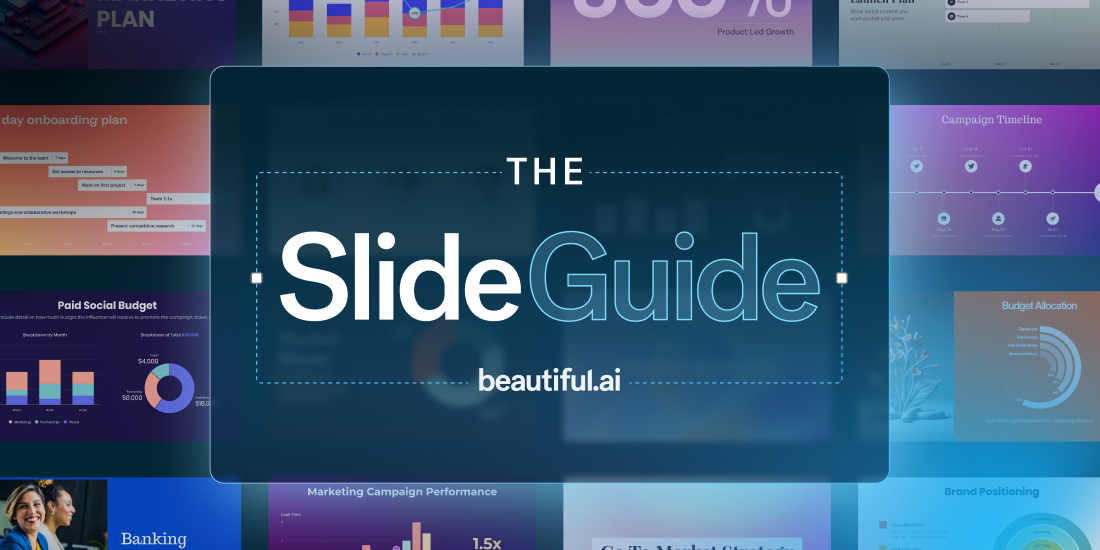
By now, you’ve heard about generative AI. You know it as a tool that can help you generate content with a single prompt— in our case, presentations. But the umbrella term of generative AI covers so much from music to complex coding. How businesses leverage artificial intelligence will vary depending on the gaps they’re trying to fill in their workflow.
AI presentations act as a creative partner in the design process that creates slides quickly, helps brainstorm ideas and generates text and images in a snap. All you have to do is ask, and watch DesignerBot bring your prompt to life. Beyond slide and deck design, there’s a lot that AI can do for your presentation that is underrated.
Here are 4 novel use cases for generative AI in presentations.
AI can help find you famous quotes relevant to your story
Have you ever spent hours scouring Pinterest for the perfect quote? We love Pinterest as much as the next creative, but it can be a time suck and counterproductive. Quotes can be inspiring, thought-provoking, or funny, but whichever way you spin it they’re drumming up some emotion from your audience. And sometimes a good quote is what your presentation is missing to really drive a point home.
Instead of searching the web for the perfect quote to add to your presentation, let AI find it for you. Enter a prompt like, “find me an inspirational quote about building a business from the ground up,” and see what DesignerBot spits out. This helps you find famous quotes relevant to your story without ever having to open a new tab or leave your presentation.
AI can generate unique images that you can’t find anywhere else
We’ve all heard of DALL-E, the platform used by millions to create unique, digital images based on any prompt. No really, any prompt. There’s no limit to what type of asset you can create. Think things like an oil painting of a dog drinking coffee in an office, or an astronaut lounging in space in a tropical resort. With AI you can transform your ideas into creative images in a snap, and remove the tedious graphic design process. For teams, this removes a huge bottleneck allowing departments to create their own imagery within a deck without relying on the marketing team’s time.
A picture is worth a thousand words, and with AI you can drive your message home with images created exclusively for you and your story. These AI generated images are never the same twice, so you can grab the audiences’ attention with something unique to your prompt.
AI can translate your text into different languages
When you think of generative AI you probably think of it creating something new from scratch. And you’re not wrong. However an underrated feature is that generative AI can also rework existing text to make it longer, shorter, or change the tone of voice. This is especially helpful if you’re tailoring your message to a specific audience. On the same coin, DesignerBot can take your text on a slide and translate it into different languages.
Sure, Google Translate is great. But there’s something to be said for being able to translate right within the presentation without any additional tabs or apps. This can save time if you need to change the language on a handful of slides, but not the entire deck.
AI can pull in background information on a client you’re pitching
Sales teams are constantly customizing their sales pitches and proposals to fit the story of the audience. In some cases, this might look like specific branding to incorporate the client’s logos, fonts and colors. In others, a sales manager might include particular information about the prospect that explains why they’d be a good candidate for the product or service they’re pitching. Doing research on company background, industry trends, or competitor analysis for the client can take a pitch to the next level.
With AI presentations, you can let the technology do your homework for you. Ask DesignerBot to create a slide with information on Coca-Cola such as market share, company size, and the executive team. This gives you a jumping off point for your research without going down the rabbit-hole of the Internet.
.webp)
.webp)


.webp)


